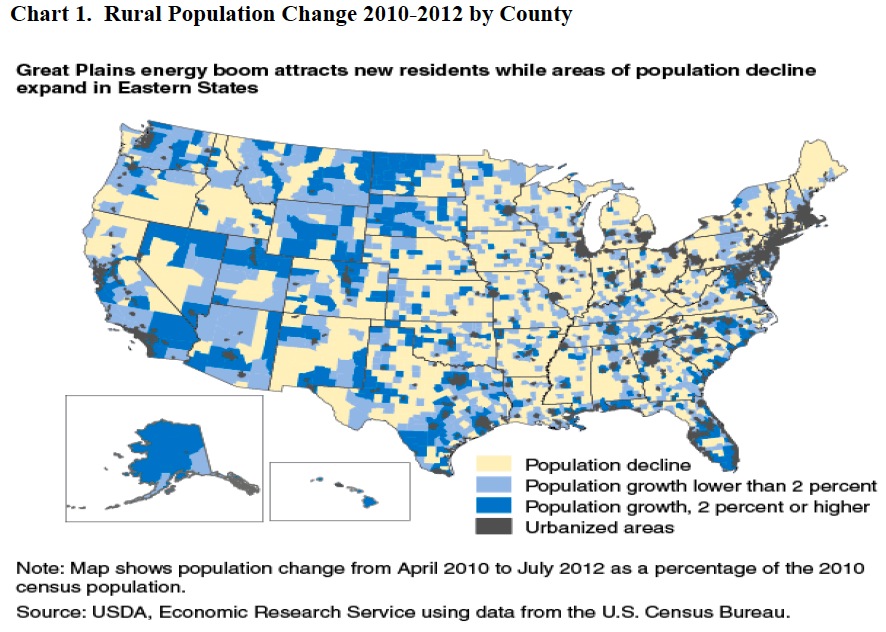TRIP
Executive Summary
America’s rural heartland plays a vital role as home to a significant share of the nation’s
population, many of its natural resources and popular tourist destinations, and as the primary
source of the energy, food and fiber that supports America’s economy and way of life. The
strength of the nation’s rural economy relies greatly on the quality of its transportation system,
particularly its roadways, which link rural America with the rest of the U.S. and to markets in
other countries. The economy of rural America, which supports the quality of life for the
approximately 46 million Americans living in rural areas, rides on the quality and connectivity of
the rural transportation system. But roads, highways and bridges in the nation’s heartland face a
number of significant challenges: they lack adequate capacity, they fail to provide needed levels
of connectivity to many communities, they are not built to adequate standards to accommodate
growing freight travel in many corridors, rural roads and bridges have significant deficiencies,
they lack many desirable safety features, and they experience serious traffic crashes at a rate far
higher than all other roads and highways. This report looks at the condition, use and safety of the
nation’s rural transportation system, particularly its roads, highways and bridges, and identifies
needed improvements.
The following are the key findings of the report.
- Rural America plays a vital role as home to a significant share of the nation’s population, natural resources and tourist destinations. It is also the primary source of the energy, food and fiber that drive the U.S. economy.
- Rural America is defined as counties that do not contain an urban area with a population of 50,000 or greater, or counties that lack a large commuting flow to a county containing at least one urban area with a population of 50,000 or greater.
- Rural America is home to approximately 46 million people, accounting for approximately 15 percent of the nation’s population. Rural America contains roughly 72 percent of the land in the U.S. and is home to the vast majority of the nation’s 2.2 million farms.
- The nation’s rural population declined slightly between 2010 and 2012 – a loss of 44,000 residents, or 0.09 percent — as rural areas recovered from the Great Recession. During this same time period urban America experienced a two percent population increase.
- Population did increase in some rural areas from 2010 to 2012. This population increase occurred primarily in rural counties with significant recreational opportunities, or areas that have been impacted by the ongoing energy boom, particularly in the Northern Great Plains.
- The movement of retiring baby boomers to rural America is likely to continue in the future as aging Americans seek out communities that offer affordable housing, small-town quality of life and desirable natural amenities, while often located within a short drive of larger metropolitan areas.
- Eighty-six percent of trips taken by Americans to visit rural areas are for leisure purposes.
- Popular tourism activities in rural America include hiking, golfing, biking, hunting, fishing and water sports. Rural areas are also home to beaches, national and state parks, wineries, orchards and other national amenities.
- The amount of rural tourism in a region is tied partly to the level of highway access.
Download full version (PDF): Rural Connections
About TRIP
www.tripnet.org
Founded in 1971, TRIP ® of Washington, DC, is a nonprofit organization that researches, evaluates and distributes economic and technical data on surface transportation issues. TRIP is sponsored by insurance companies, equipment manufacturers, distributors and suppliers; businesses involved in highway and transit engineering and construction; labor unions; and organizations concerned with efficient and safe surface transportation.
Tags: TRIP







 RSS Feed
RSS Feed